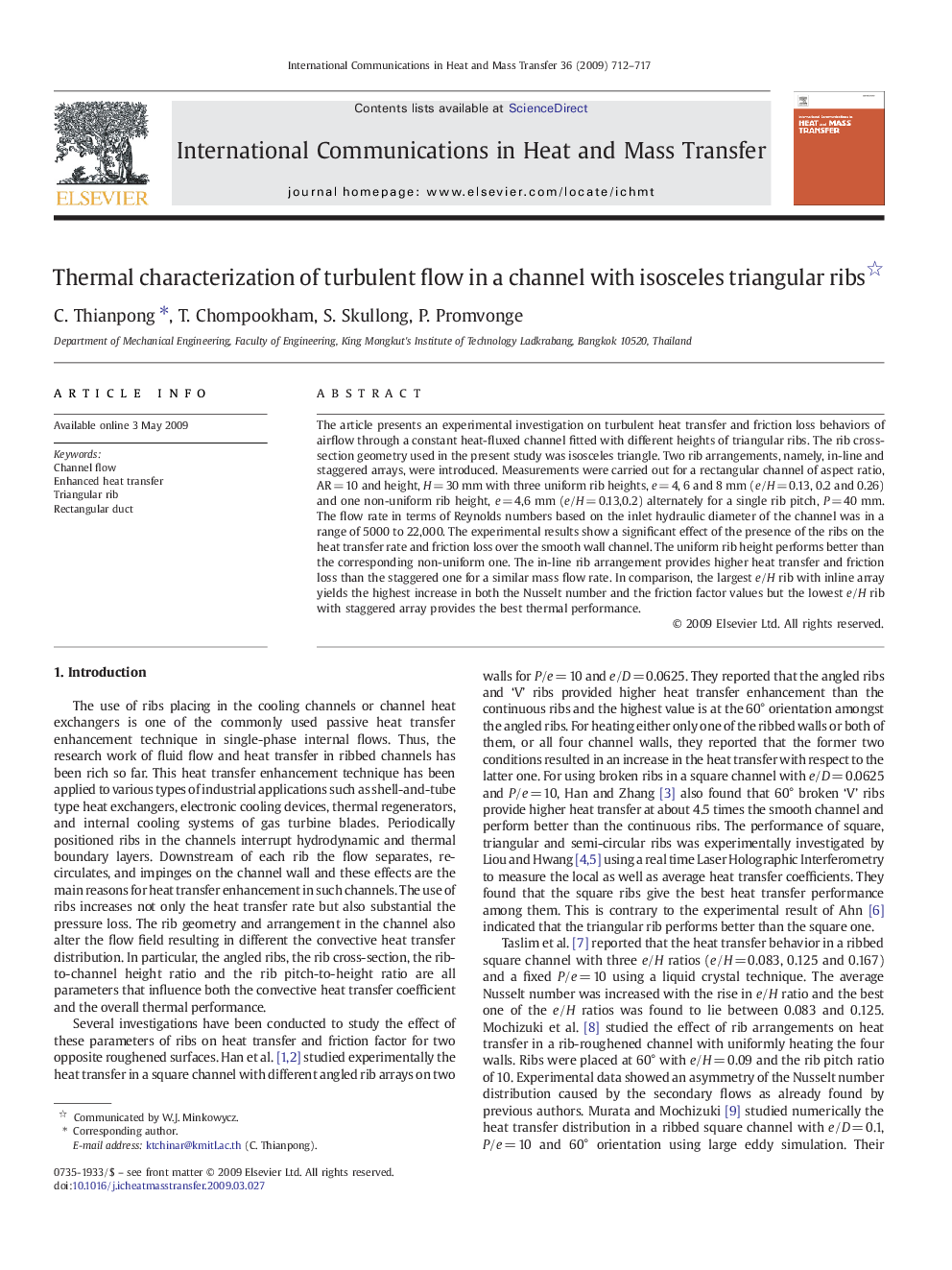| Article ID | Journal | Published Year | Pages | File Type |
|---|---|---|---|---|
| 654596 | International Communications in Heat and Mass Transfer | 2009 | 6 Pages |
Abstract
The article presents an experimental investigation on turbulent heat transfer and friction loss behaviors of airflow through a constant heat-fluxed channel fitted with different heights of triangular ribs. The rib cross-section geometry used in the present study was isosceles triangle. Two rib arrangements, namely, in-line and staggered arrays, were introduced. Measurements were carried out for a rectangular channel of aspect ratio, AR = 10 and height, H = 30 mm with three uniform rib heights, e = 4, 6 and 8 mm (e/H = 0.13, 0.2 and 0.26) and one non-uniform rib height, e = 4,6 mm (e/H = 0.13,0.2) alternately for a single rib pitch, P = 40 mm. The flow rate in terms of Reynolds numbers based on the inlet hydraulic diameter of the channel was in a range of 5000 to 22,000. The experimental results show a significant effect of the presence of the ribs on the heat transfer rate and friction loss over the smooth wall channel. The uniform rib height performs better than the corresponding non-uniform one. The in-line rib arrangement provides higher heat transfer and friction loss than the staggered one for a similar mass flow rate. In comparison, the largest e/H rib with inline array yields the highest increase in both the Nusselt number and the friction factor values but the lowest e/H rib with staggered array provides the best thermal performance.
Related Topics
Physical Sciences and Engineering
Chemical Engineering
Fluid Flow and Transfer Processes
Authors
C. Thianpong, T. Chompookham, S. Skullong, P. Promvonge,
